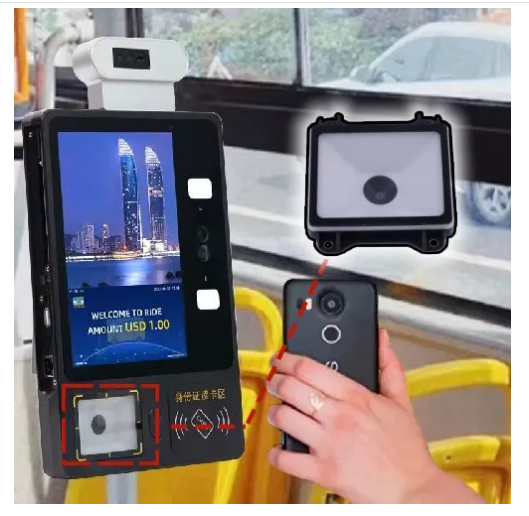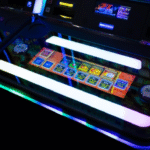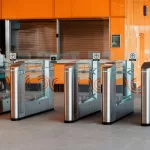Why Interference is the Hidden Challenge in Modern Scanning
In modern commerce and industrial automation, NFC and barcode technologies often operate side by side. Dual-mode scanner readers have become essential tools for sectors ranging from retail to logistics. They enable contactless NFC transactions and optical barcode recognition within the same device, delivering unmatched flexibility.
However, their operational environments are rarely ideal. Electromagnetic noise from nearby devices, fluctuating lighting conditions, and reflective material surfaces can severely impact scanning accuracy. These factors, if left unaddressed, compromise both efficiency and user experience.
云网 has long understood that hardware capability alone is insufficient. Only through meticulous anti-interference design can NFC barcode scanner readers consistently deliver fast and accurate performance.
Section 1: The Evolution of NFC and Barcode Dual-Mode Scanning
Dual-mode scanning emerged to meet the needs of businesses handling both physical and digital identifiers. NFC enables wireless data transfer, ideal for payments and secure authentication. Barcode scanning remains the universal standard for product identification, inventory control, and logistics tracking.
Initially, these functions were handled by separate devices. Integrating them into a single module reduces hardware costs, simplifies workflows, and enhances convenience. Yet integration also amplifies susceptibility to interference, as both NFC and optical scanning rely on precise signal interpretation.
By 2025, dual-mode NFC barcode scanner readers have shifted from simple retail counters to self-service kiosks, ticketing systems, and industrial automation lines. Each environment introduces unique interference challenges.
Section 2: Understanding the Sources of Interference
Electromagnetic Interference (EMI)
Electromagnetic noise arises from nearby electronics, motors, and wireless transmitters. NFC operates at 13.56 MHz, making it vulnerable to field distortions that reduce reading range and reliability.
Lighting Interference
Barcode scanning uses visible or infrared light. Strong sunlight, flickering fluorescent lamps, or uneven indoor lighting can cause image distortion, reducing decoding accuracy.
Material Reflection
Glossy packaging, metallic surfaces, or curved objects can scatter or reflect light irregularly. This leads to incomplete barcode imaging, making decoding more difficult.
Dual-mode scanners face the added complexity of handling both NFC signal stability and optical imaging clarity simultaneously.
Section 3: Anti-Interference Design Principles
To address these challenges, anti-interference design incorporates both hardware engineering and software optimization.
Electromagnetic Shielding
High-grade shielding materials are placed around NFC antennas and signal pathways. This prevents stray electromagnetic fields from distorting data signals.
Signal Filtering and Calibration
Advanced signal processing algorithms filter out unwanted frequencies. Adaptive calibration adjusts NFC sensitivity based on environmental conditions.
Optical Path Optimization
Custom lens structures and precise light-source placement reduce glare and reflection. Anti-reflective coatings on sensor windows improve light absorption.
Dynamic Exposure Control
In barcode scanning, software adjusts exposure time and gain in real time, compensating for bright or dim lighting.
Surface Adaptation Algorithms
Image recognition software adapts decoding parameters for glossy, curved, or irregular surfaces, ensuring consistent reading performance.
Section 4: Real-World Application Scenarios
Retail Checkouts
At busy supermarket counters, scanners face fluorescent lighting and multiple electronic payment systems. Anti-interference design ensures accurate reads even with overlapping NFC transactions and barcode scans.
Transport Ticketing
Metro stations and airports present high EMI from security systems and fluctuating lighting from LED boards. Dual-mode scanners must process tickets quickly without repeated scans.
Industrial Automation
Factories generate strong electromagnetic fields from heavy machinery. Barcode scanners also contend with dust and reflective metal parts. Anti-interference modules maintain precision under these conditions.
Healthcare Environments
Hospitals use scanners near medical equipment that emits EMI. Accurate readings are critical for patient identification and medication tracking.
Section 5: Technical Innovations in Anti-Interference Scanning
Several innovations are redefining interference management:
Multi-layer PCB Design for isolating NFC and optical circuits.
Adaptive NFC Field Shaping to focus signal strength where needed.
High Dynamic Range Imaging (HDRI) for barcode clarity under extreme lighting.
Edge AI Decoding for faster, interference-resistant interpretation of both NFC and barcode data.
rCloud integrates these technologies into its scanning modules, delivering unmatched reliability in mission-critical applications.
Section 6: Market Outlook and Strategic Positioning
As businesses digitize operations, the need for reliable, interference-resistant scanning grows. NFC barcode scanner readers with advanced anti-interference design will become the standard across multiple industries.
Manufacturers who invest in environmental adaptability will lead market adoption. rCloud’s strategic advantage lies in its balance of compact design, cross-platform compatibility, and environmental resilience.
Conclusion: Building Reliability into Every Scan
In NFC and barcode dual-mode scanning, speed and accuracy define user satisfaction. Yet without anti-interference measures, these goals are unattainable in real-world environments.
Electromagnetic noise, lighting variability, and reflective surfaces are not anomalies—they are the norm. rCloud addresses them through a holistic anti-interference design philosophy, merging hardware shielding, optical engineering, and adaptive algorithms.
As industries demand seamless, high-speed identification, rCloud’s NFC barcode scanner readers stand as a benchmark for performance and reliability.
CTA: [Discover rCloud’s Advanced NFC Barcode Scanner Readers]






